
Laundry Bridge is one of the oldest bridges in St. Petersburg, which is an architectural creation of its time.
The original appearance of the bridge has been preserved to this day.
The laundry Bridge is located in the historical center of the city, along the axis of the Palace Embankment at the source of the Fontanka River. The bridge connects the 1st Admiralty Island (at Summer Garden) with an Unnamed island, and is also an integral part and connecting link Palace embankment and Kutuzov embankment.
The name" Laundry " was given to the bridge due to the fact that earlier there were palace laundries near it - at the corner of Sergievskaya Street (now Tchaikovsky Street) and the Fontanka River. The laundries themselves have not survived to this day.
This is a small bridge that has a total length of only 40.9 meters, and its width is 20.6 meters.
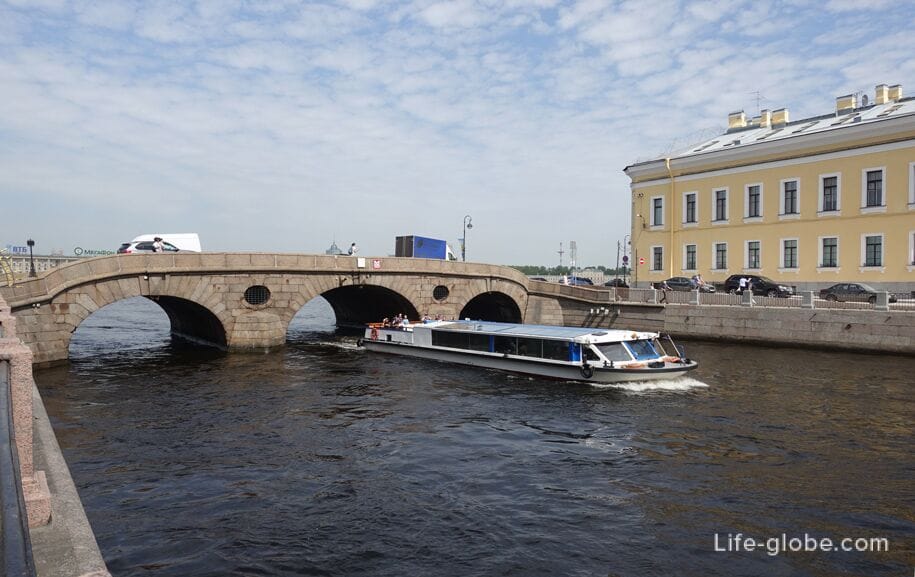
The laundry Bridge is a stone arched three-span crossing.
Each span of the bridge is a hinged arch, which in the general ensemble are a continuous curved stone arch, lined with granite. The middle arch of the bridge is wider and higher than the symmetrical side arches. The abutments and supports of the bridge are stone on a pile base, lined with granite. Oval lucarns (holes) were created above the intermediate supports to facilitate the masonry.
On both sides of the bridge (the Neva River and the Fontanka River), railings are built, which are a solid granite parapet.
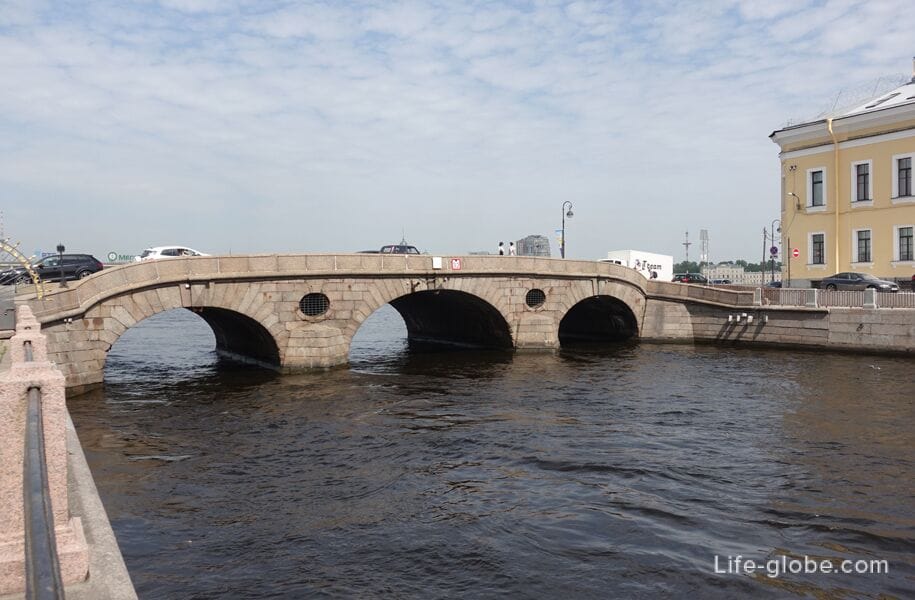

The Laundry Bridge is a roadway and pedestrian.
Granite slabs are laid on the sidewalks of the bridge bed. The roadway is separated from the sidewalk by a granite curb. The sidewalks of the bridge openings have ten steps each, which serve as a transition from the bridge to the embankments.

From the Laundry Bridge there are beautiful views, including the Neva, Fontanka and The Summer Palace of Peter I in the Summer Garden.
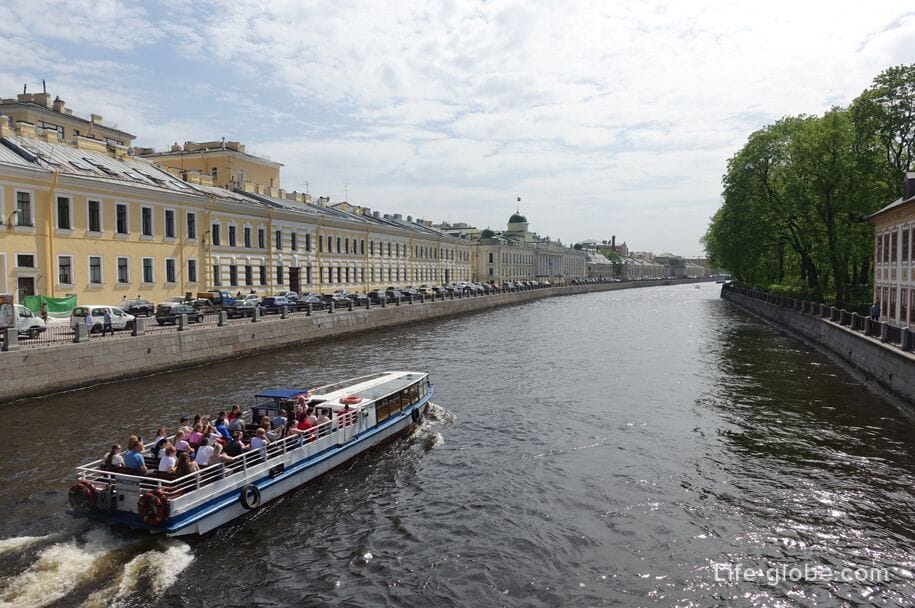

The bridge was built in 1766-1769 by the architect I. L. Rossi and the "square maker" T. I. Nasonov, simultaneously with the construction of granite embankments near the Summer Garden.
Major repairs of the bridge were carried out in 1926 according to the project of engineer B. D. Vasiliev. At that time, the bridge was fenced with lintels from the Neva and Fontanka sides; the pile foundation of the river supports was reinforced with a concrete cushion; the ice cutters were re-laid; the underwater parts were additionally reinforced with wooden sheathing and beams; cement mortar was injected under pressure into the masonry seams.
After the repairs, the architectural appearance and design of the Laundry Bridge practically did not change, only the "humped" slope of the roadway was somewhat softened.
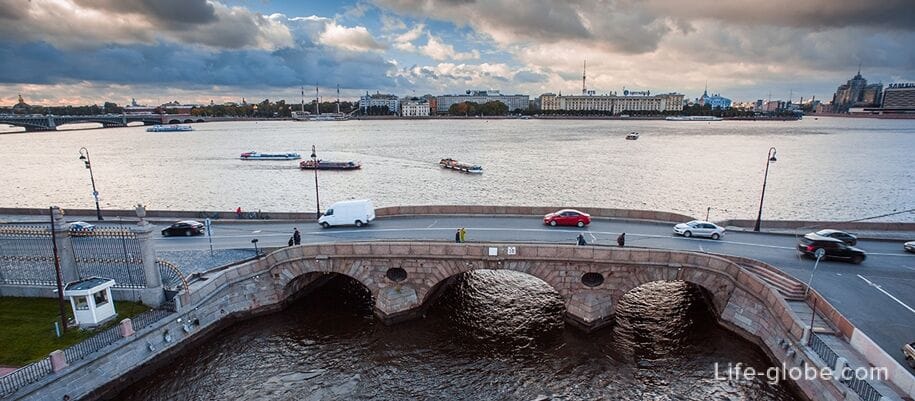
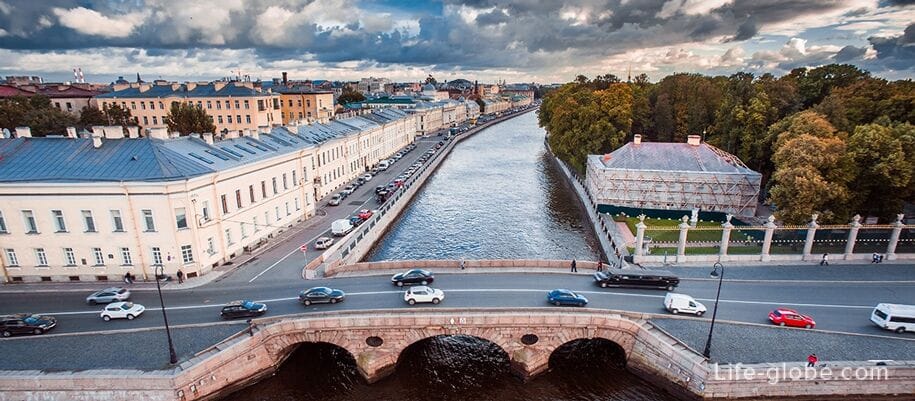
The laundry Bridge was immortalized in the poem of the same name by Joseph Brodsky:
"On the Laundry Bridge, where we are with you
They were like the hands of a dial,
Hugged at twelve before,
How not to part for a day, but forever..."
Not far from the Laundry Bridge, near the Neva River and the Winter Groove, another old stone bridge of the city - the Hermitage Bridge-runs along the axis of the Palace Embankment.
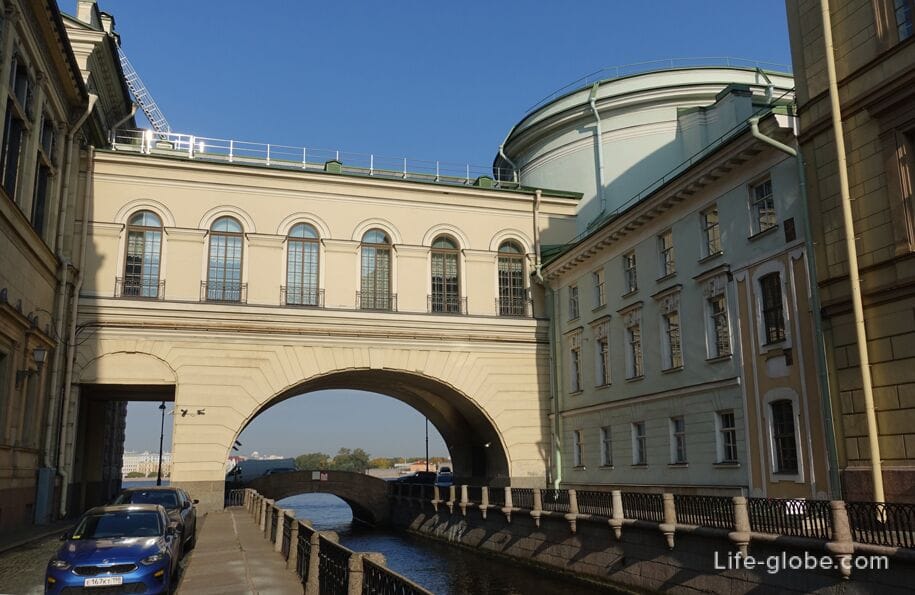
Another stone bridge along the axis of the Palace Embankment is the Upper Swan Bridge, which runs at the source of the Swan Groove.

Coordinates of the Laundry bridge: 59°56'52.0"N 30°20'11.0"E (59.947778, 30.336389).
Nearest metro stations: "Nevsky Prospekt", "Gostiny Dvor", "Admiralteiskaya" and "Chernyshevskaya".
All accommodation facilities in St. Petersburg, including in the city center and more remotely from it, can be viewed and booked here